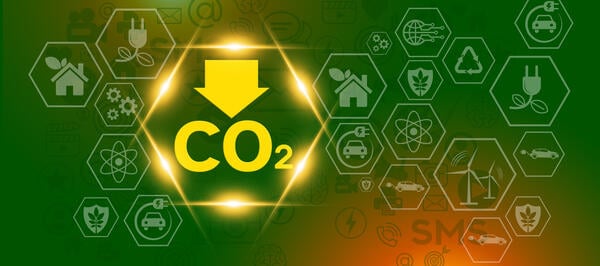
On Climate Action, a View From Behind the Pack (opinion)
The University of California system recently made waves by announcing a commitment “to fully decarbonize no later than 2045.” Unlike many “carbon neutrality” or “net zero” plans that rely heavily on carbon offsets, the UC system plans to cut emissions from campus electricity and fossil fuel use by at least 90 percent from 2019 levels and to balance residual emissions by investing in projects to remove carbon dioxide from the atmosphere.
This win for the climate did not come easy: As activists from UC San Diego relate, they spent years building a coalition across campuses. Such success marks the UC system as a leader in American higher education, well ahead of other prestigious research universities with offset-heavy carbon neutrality plans—and well ahead of Purdue University, where we teach, which has no declared plans for decarbonization.
Here, we wish to discuss our experiences advocating for a climate action plan at Purdue, where among our peer institutions we are decidedly a laggard, not a leader, in the climate space. We hope that detailing our frustrating lack of success provides a sober counternarrative to the success story of the UC system. Furthermore, we hope that knowing about our efforts may help others who are similarly involved in advocating for climate action at campuses in red states.
Purdue’s Climate Story So Far
A public, land-grant university in north-central Indiana, Purdue enrolls more than 44,000 undergraduates and almost 14,000 graduate and professional students. Purdue frequently touts itself as a world leader in innovation of all sorts, from artificial intelligence to biomedical research, even highlighting research on sustainability. Due to its size, the energy-intensive nature of its research activities and its location in a climate that sees both cold winters and hot, humid summers, Purdue’s campus emits as much climate pollution as a small city—439,000 metric tons per year of carbon dioxide equivalent as of 2023, the latest year for which official estimates are available.
The Purdue community cares about sustainability: Classes in a wide range of majors feature considerable discussion of sustainability, and researchers across campus study the causes of and potential solutions for climate change. Purdue has won awards and recognition for low-hanging fruit, such as from Tree Campus USA and Bee Campus USA. Purdue also touts being named one of the most sustainable campuses by QS, although when one looks under the hood, such rankings give remarkably little weight to emissions reductions on campus. In the Association for the Advancement of Sustainability in Higher Education’s more rigorous reporting system, Purdue scored zero out of four on clean and renewable energy and 1.08 out of eight on greenhouse gas emissions.
Purdue faces unique decarbonization challenges. Our university’s administration ultimately answers to the Indiana state government, which has recently canceled the state’s climate action planning and enables most counties to restrict renewable energy development. Electricity in Indiana has the highest carbon intensity of any state other than three major coal producers—Kentucky, West Virginia and Wyoming—and entails almost four times higher greenhouse gas emissions per unit of energy than electricity in California. Duke Energy, the utility that serves Purdue, is the fourth largest lobby in Indiana.
While these challenges may seem daunting, progress on climate is possible even in Indiana. In 2023, our colleagues at Indiana University launched a plan promising carbon neutrality by 2040. They aim to get there by modest changes, such as improving energy efficiency in buildings and implementing renewable energy on campus. Purdue has also made progress—which we applaud—mainly by transitioning its combined heat and power plant from coal to natural gas. In 2023, Purdue estimated that its emissions were 27 percent lower than their coal-heavy 2011 level. But this only represents a small start to the actions needed for Purdue to live up to its obligations to students, staff, faculty, the community and, ultimately, the planet.
Community Will and Administrative Inaction
Many Purdue community members want substantial climate action. In 2020, more than 2,000 Purdue students signed a petition calling for Purdue to develop a climate action plan and create a universitywide, stand-alone sustainability office. The university’s president at the time, Mitch Daniels—Indiana’s former Republican governor and a noted climate change skeptic—dismissed the petition.
In the fall of 2022, students and faculty formed the Purdue Climate Action Collective (PCAC), aimed at pressuring the university to develop a climate action plan and to be transparent in reporting emissions. In the spring of 2023, the Purdue Student Government, the Graduate Student Government and the University Senate each passed resolutions calling on the university to commit to a climate action plan. The Senate resolution also called upon Purdue to join the Greater Lafayette Climate Action Plan, developed by the surrounding county and cities. Once again, Purdue ignored these calls.
Since then, PCAC has mounted numerous protests, spoken at student events, peppered campus with signs, reached out to the administration and attended Board of Trustees meetings to express our concerns. Our board is entirely appointed by the governor of Indiana. PCAC has also launched a new petition, now at 1,600 signatures.
Despite the Purdue community’s advocacy for climate action, our new president, Mung Chiang, has authorized no comprehensive, campuswide climate action plan. The nearest thing is the Campus Planning, Architecture and Sustainability office’s Sustainability Master Plan for 2020–25, which aims to reduce Purdue’s emissions from electricity and fossil fuel use 50 percent below 2011 levels by 2025 and to pursue 500 kilowatts of renewable energy. While we applaud these near-term goals, and the incomplete but significant progress toward achieving them, decarbonizing Purdue will require making a long-term plan to outgrow natural gas and Duke Energy’s carbon-intensive electricity.
On this topic, the Purdue administration told the University Senate in 2024 that “Purdue has a climate action plan consisting of two parts,” referring senators to the Sustainability Master Plan and to a joint study with Duke Energy on the feasibility of a small modular nuclear reactor (SMR) for the campus. While nuclear might play a role in Purdue’s energy future, SMRs are an unproven technology and should not be used as an excuse to delay the decarbonization of our campus.
The SMR study’s 2023 report states, “whether SMRs will be an economic option for Duke Energy Indiana’s customers is unknown given current technology, timing and cost uncertainty.” The report cites a likely cost range of $1.1 to $2.25 billion (for context, Purdue’s endowment currently totals $4.1 billion) and discusses design technologies that may only become “commercially viable in 2035–2040.” A responsible climate action plan could certainly include nuclear energy down the road, if it proves successful, but the urgency of the climate crisis demands that institutions address their greenhouse gas emissions now.
Possible Paths Forward
Preliminary studies of decarbonization at Purdue suggest that climate action is feasible and affordable. Today, Purdue could take a number of proven, cost-effective actions, such as improving the efficiency of its building operations (for example, by using software to avoid heating or cooling unoccupied spaces), or increasing parking fees and investing the proceeds in infrastructure and incentives for buses and electric vehicle charging. In the next five to 10 years, Purdue could electrify its vehicle fleet and arrange power-purchase agreements with clean electricity generators in the area, as has been done successfully at places like the University of Michigan and the University of Minnesota.
Long-term pathways to deep emission reductions remain uncertain, especially when considering Scope 3 emissions (emissions that are indirectly generated by university activities, such as employee commuting and flying), but Purdue has options and plenty of experts eager to investigate them. Inclusive and transparent processes for climate action planning would draw upon Purdue community expertise to identify, evaluate and select climate action pathways. But for any of this to happen, our administration must first acknowledge the need for climate action on campus.
Our experience at Purdue has affirmed that fighting for climate action on public red-state campuses is an uphill battle. We know that change must come from both above and below. Students, faculty and staff concerned about the future of our planet must continue to raise their voices and add to the pressure the university feels. Administrators more inclined toward shared governance—or toward maintaining a livable climate for the future generations that Purdue aims to serve—must also add their voices to the mix. As Purdue begins to act on climate, its passionate community of activists and innovators will be there to support implementation and to celebrate accomplishments along the way.
Although we have much to learn from the success of places like UC, places like Purdue need a different set of tools and approaches. For those at similarly recalcitrant universities, we hope this message reminds them that institutions won’t take these steps without great pressure. But given the dire warnings about the future of our planet, the importance of local climate action as congressional Republicans and the Trump administration have repealed most federal support for climate action, and the important role of universities as thought leaders, we remain convinced that this is a fight worth having.
Source link



